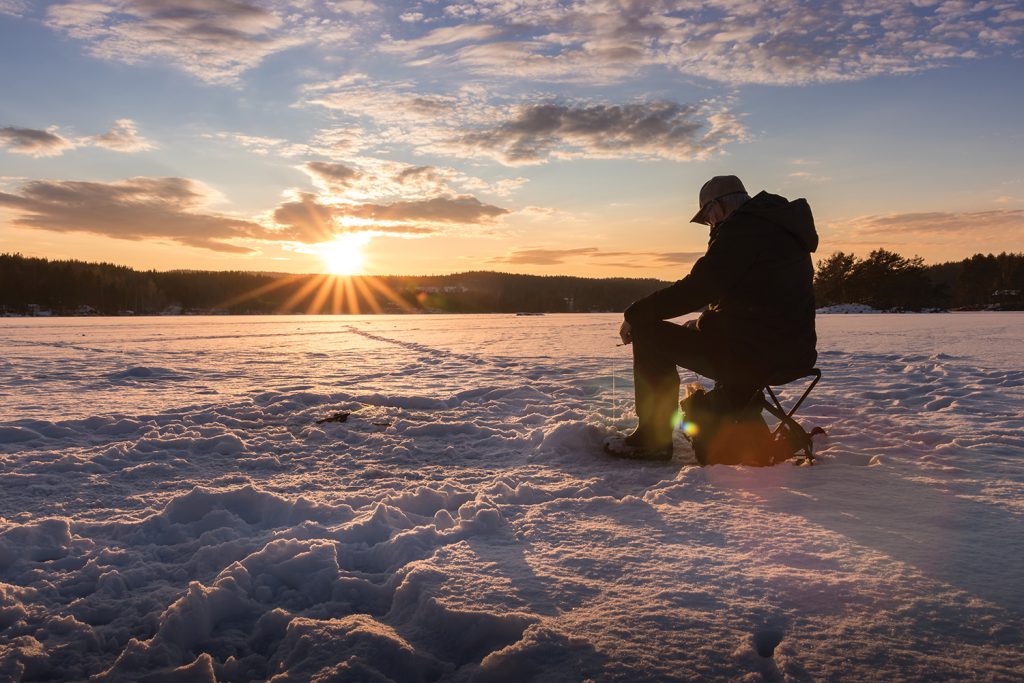
By Jack Spaulding
Indiana ice fishermen watched the last days of 2021 go by with spring-like temperatures and not a sign of fishable ice. January edged in at first with similar warmth but finally dropped into ice-forming temperatures. Ice fishermen have become impatient waiting for “first ice” and the chance for ice fishing. Day-to-day up and down temperatures have brought frustration for anglers waiting for some safe, fishable “hard water.”
Fishermen are not the only ones waiting for safe ice. There will be others out; and it’s important to keep a watchful eye for other people who may venture out on neighborhood retention ponds, lakes and other waterways and find themselves in trouble.
Every winter, thousands of Hoosiers safely enjoy fishing, skating, hiking, or just sliding around on frozen ponds and lakes. However, every year people drown after falling through ice. Don’t let this happen to you or yours.
When thinking about getting on the ice, put safety first. Believe all ice is thin ice unless proven otherwise.
Here are a few tips to remember when considering standing on or walking on a frozen body of water:
- No ice without testing and confirmation is safe ice.
- Do not go alone.
- Test the thickness of the ice with an ice auger. At least 4 inches of ice is recommended for ice fishing; and 5 inches is recommended for snowmobiling.
- If you don’t know the thickness of the ice don’t go out on it.
- Wear a life jacket or flotation coat.
- Carry ice hooks and rope gear.
- Before going on the ice, leave a note of your whereabouts with a friend or family member.
- Never attempt to test the thickness of the ice while alone.
- Wearing a life jacket is especially important when on ice. If you fall through, a life jacket will keep your head above the water until help arrives.
Remember a new coating of snow, while perhaps beautiful, can make for treacherous ice conditions. Snow can serve as insulation, causing water to freeze at a slower rate. When snow and rain freeze into ice, it is not as strong as solid, clear ice.
Another potentially dangerous situation is when you encounter a pet or other animal in distress on the ice. If this should occur, do not go after the animal. Instead, contact local emergency response personnel such as the fire department, who are equipped to make a rescue.
A few more tips:
- Some bodies of water can appear to be frozen solid but have thin ice in several potentially unexpected areas.
- Flowing water, such as rivers and streams, should be avoided when covered by a layer of ice.
- Similarly, water surrounded by sand may freeze with inconsistencies in the thickness of the ice.
- Underground springs, wind, waterfowl, and other animals can also keep areas of ice thin.
Dress for the cold, and enjoy the winter weather, but make safety a priority.
JACK SPAULDING is a syndicated state outdoors writer and a member of RushShelby Energy. Readers can contact the author by writing to this publication, or by email to jackspaulding@hughes.net. Spaulding’s books, “The Best Of Spaulding Outdoors” and “The Coon Hunter And The Kid,” are available from Amazon.com as paperbacks or Kindle downloads.



